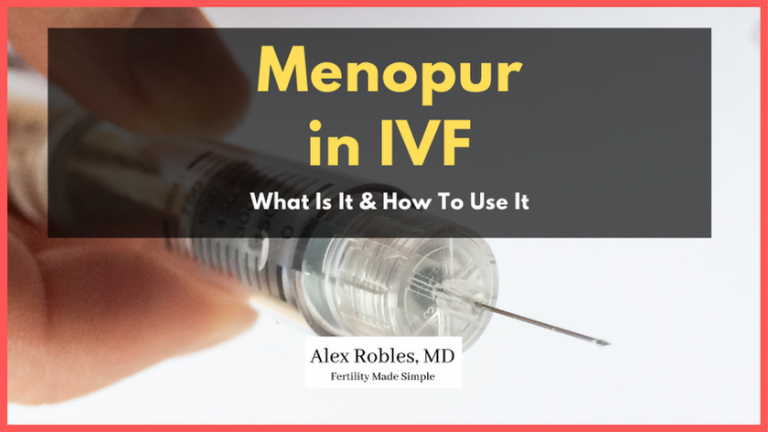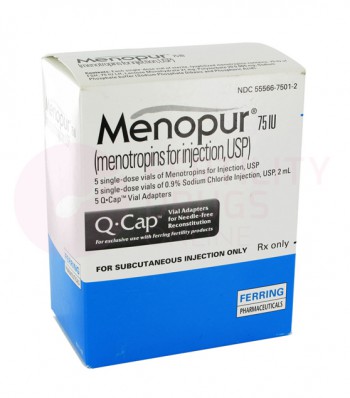
What Does IVF Mean for You? A Deep Dive into In Vitro Fertilization
April 15, 2025
What Insurance Covers IVF in Alabama: Your Ultimate Guide to Fertility Coverage
April 15, 2025What Does Menopur Do in IVF? Your Guide to This Fertility Game-Changer

What Does Menopur Do in IVF? Your Guide to This Fertility Game-Changer
When you’re stepping into the world of in vitro fertilization (IVF), the process can feel like a whirlwind of doctor visits, injections, and big emotions. One name that often pops up during this journey is Menopur—a medication that plays a starring role in helping many people build their families. But what exactly does Menopur do in IVF? If you’re curious about how this drug works, why it’s used, and what it means for your chances of success, you’re in the right place. This guide will break it all down in a way that’s easy to grasp, with some fresh insights and practical tips to help you along the way.
Picture this: your ovaries are like a garden, and Menopur is the special fertilizer that helps grow more flowers—except in this case, those “flowers” are eggs. By the end of this article, you’ll understand how Menopur fits into the IVF puzzle, what to expect when you use it, and even some lesser-known details that could make a difference in your experience. Let’s dive in!
How Menopur Works: The Basics of Boosting Your Eggs
Menopur is a fertility medication that belongs to a group called gonadotropins. It’s made up of two hormones your body already produces naturally: follicle-stimulating hormone (FSH) and luteinizing hormone (LH). These hormones team up to tell your ovaries to get busy growing eggs. In a typical menstrual cycle, your body makes just enough FSH and LH to produce one egg. But in IVF, the goal is to grow multiple eggs at once—because more eggs mean more chances to create healthy embryos.
Think of Menopur as a cheerleader for your ovaries. It steps in with an extra dose of FSH and LH to encourage several follicles (those tiny sacs in your ovaries that hold eggs) to develop at the same time. Once those follicles are big enough—usually around 18-20 millimeters—your doctor will use another medication (called a trigger shot) to help release the mature eggs for retrieval. From there, the eggs are collected, fertilized in a lab, and eventually transferred back into your uterus as embryos.
What’s cool about Menopur is that it’s not some futuristic lab creation. It’s actually derived from the urine of postmenopausal women, purified to a high degree so it’s safe and effective. That might sound a little wild, but it’s been a trusted part of fertility treatments for years!

Why Menopur Is a Go-To in IVF
So, why do doctors choose Menopur for IVF? It’s all about balance and results. Unlike some other fertility drugs that only contain FSH (like Gonal-F or Follistim), Menopur brings both FSH and LH to the table. This combo mimics how your body naturally prepares eggs, which can be a big plus for certain patients.
Here’s why Menopur stands out:
- More Eggs, More Options: IVF success often hinges on getting a good number of eggs. Menopur helps stimulate your ovaries to produce multiple follicles, increasing the odds of retrieving mature eggs that can be fertilized.
- Tailored for Your Needs: Doctors can adjust your Menopur dose based on how your body responds, making it a flexible tool in your treatment plan.
- Supports Egg Quality: Some research suggests that the LH in Menopur might help improve egg quality in specific cases, like for women over 35 or those with lower ovarian reserve. While egg quality is tricky to measure, this potential perk has kept Menopur in the spotlight.
In 2023, a study published in Fertility and Sterility compared Menopur to FSH-only drugs in women undergoing IVF. The results showed that women using Menopur had a slightly higher number of usable embryos, especially among those labeled as “high responders” (meaning their ovaries produced a lot of eggs). It’s not a magic bullet, but it’s a clue that Menopur’s dual-hormone approach might give some folks an edge.
Menopur vs. Other IVF Meds: What’s the Difference?
If you’re new to IVF, you might wonder how Menopur stacks up against other medications like Gonal-F or Follistim. Here’s a quick rundown to clear things up:
| Medication | What It Contains | How It Helps in IVF |
|---|---|---|
| Menopur | FSH + LH | Stimulates multiple follicles, may support egg quality |
| Gonal-F | FSH only | Boosts follicle growth, precise dosing |
| Follistim | FSH only | Similar to Gonal-F, focuses on egg quantity |
Menopur’s LH component is the big differentiator. LH plays a role in the final stages of egg maturation, which could explain why some doctors pair it with FSH-only drugs or use it solo for certain patients. For example, if your body doesn’t produce enough LH on its own—a common issue as women age—Menopur can fill that gap.
But it’s not a one-size-fits-all deal. Your doctor picks Menopur (or mixes it with other meds) based on your age, hormone levels, and how your ovaries have responded in the past. If you’ve got a lower egg count, Menopur might be part of a plan to maximize what you’ve got. On the flip side, if you’re at risk of over-responding (like with polycystic ovary syndrome, or PCOS), your dose will be carefully monitored to avoid complications.
What to Expect When You’re Taking Menopur
Starting Menopur can feel intimidating, especially if you’re not a fan of needles. But don’t worry—it’s manageable, and most people get the hang of it quickly. Here’s what the process looks like:
Step-by-Step: Using Menopur in IVF
- Mixing the Magic: Menopur comes as a powder in a vial, and you’ll mix it with a liquid (diluent) using a syringe. Your nurse will show you how to do this—usually with a handy tool called a Q-Cap to make it less messy.
- Injection Time: You’ll inject it under your skin (subcutaneous), often in your belly or thigh, once a day. Pick a time you can stick to, like after dinner, so it becomes routine.
- Duration: You’ll typically take Menopur for 8-12 days, depending on how your follicles grow. Your doctor tracks this with ultrasounds and blood tests.
- Trigger Shot: Once your eggs are ready, you’ll switch to a trigger shot (like hCG) to release them—no more Menopur after that!
How It Feels
Most people say the injection itself stings a little, like a quick pinch. You might notice some redness or soreness at the site, but that usually fades fast. As your ovaries get to work, you could feel bloated or tender, almost like PMS on overdrive. That’s normal—it just means those follicles are growing!
✔️ Pro Tip: Rotate your injection spots (left side one day, right side the next) to avoid irritation. A warm compress afterward can soothe any soreness.
❌ Watch Out: If you feel sharp pain, gain a lot of weight suddenly, or can’t catch your breath, call your doctor ASAP. These could be signs of ovarian hyperstimulation syndrome (OHSS), a rare but serious side effect.
Side Effects: The Good, the Bad, and the Manageable
No medication is perfect, and Menopur comes with its share of side effects. The good news? Most are mild and temporary. Here’s what you might experience:
- Common Stuff: Bloating, headaches, mild stomach cramps, or feeling emotional. These usually ease up once you stop the injections.
- Injection Site Reactions: A little redness or bruising where you poke. Nothing a cozy sweatshirt can’t hide!
- The Rare Biggie—OHSS: This happens in less than 5% of cases, but it’s worth knowing about. OHSS is when your ovaries overreact, causing swelling and fluid buildup. Mild cases feel like bad bloating; severe ones need medical attention.
A 2024 survey by the American Society for Reproductive Medicine found that about 70% of IVF patients using Menopur reported mild side effects, while only 3% had issues serious enough to pause treatment. That’s reassuring—it’s a bumpy ride for some, but most get through it just fine.
Coping Tricks
- Stay Hydrated: Water helps with bloating and keeps you feeling human.
- Rest Up: Take it easy when you’re feeling off—your body’s doing a lot!
- Talk It Out: Mood swings happen. Lean on a friend or a support group to vent.
Does Menopur Really Make a Difference? The Science Says…
You’re probably wondering: does Menopur actually boost my chances of having a baby? The answer isn’t a simple yes or no—it depends on you and your unique situation. But let’s look at what the research tells us.
A 2023 meta-analysis in Reproductive BioMedicine Online reviewed 11 studies with over 1,000 IVF patients. It found that Menopur led to a slightly higher number of retrieved eggs (about 10-12 on average) compared to FSH-only drugs (8-10). Pregnancy rates were similar, hovering around 30-35% per cycle, but Menopur users had a small edge in embryo quality for women over 37. Why? The LH might help eggs mature more evenly, though scientists are still piecing that puzzle together.
Here’s a twist that doesn’t get much airtime: Menopur might shine brightest in “poor responders”—people whose ovaries don’t produce many eggs naturally. A 2024 study in Human Reproduction tested Menopur in women with low AMH (anti-Müllerian hormone, a marker of egg reserve). Those on Menopur had a 25% pregnancy rate per cycle, compared to 18% with FSH alone. Small sample size, sure, but it’s a hint that Menopur could be a game-changer for some.
Interactive Check-In: How’s Your IVF Knowledge?
Let’s take a quick break—grab a snack and test your Menopur smarts with this mini-quiz! No pressure, just fun.
- What two hormones are in Menopur?
- A) Estrogen and progesterone
- B) FSH and LH
- C) Insulin and glucagon
- How long do you usually take Menopur in IVF?
- A) 1-2 days
- B) 8-12 days
- C) 3 months
- What’s the main goal of Menopur?
- A) To trigger ovulation
- B) To grow multiple eggs
- C) To shrink your ovaries
(Answers: 1-B, 2-B, 3-B. How’d you do?)
The Emotional Side: Riding the Menopur Rollercoaster
IVF isn’t just about shots and science—it’s an emotional marathon. Menopur might make you feel like your hormones are throwing a party you didn’t RSVP to. One minute you’re hopeful, the next you’re crying over a cute dog video. That’s totally normal.
Take Sarah, a 34-year-old teacher who went through IVF in 2024. She told me, “Menopur made me bloated and moody, but seeing eight follicles on the ultrasound? That was my win. It kept me going.” Her story’s a reminder: the physical stuff is real, but the hope Menopur brings can outweigh the tough days.
Emotional Survival Kit
- Journal It: Scribble down your feelings—good, bad, or messy.
- Buddy Up: Find an IVF pal online or IRL to swap stories.
- Celebrate Small Wins: Got through an injection without flinching? You’re a rockstar.

Menopur Myths Busted: Separating Fact from Fiction
There’s a lot of chatter out there about Menopur, and not all of it’s true. Let’s clear up some common misconceptions:
- Myth #1: Menopur Guarantees Twins
Nope! It increases your odds of multiples (about 20-25% of pregnancies), but it’s not a sure thing. Your doctor controls how many embryos go back in, not Menopur. - Myth #2: It’s Only for Older Women
False! Menopur’s used across ages—teens with fertility issues to women in their 40s. It’s about your ovaries, not your birth year. - Myth #3: It Hurts Egg Quality
No evidence backs this up. Egg quality’s mostly tied to genetics and age, not Menopur. If anything, the LH might help in some cases.

Beyond the Basics: Three Fresh Angles on Menopur
Most articles stop at how Menopur works and its side effects. But there’s more to explore—stuff that doesn’t always make the headlines. Here are three points you won’t find everywhere:
1. Menopur’s Role in Mini-IVF
Ever heard of mini-IVF? It’s a gentler, lower-dose version of traditional IVF, often for people who want fewer meds or have sensitive ovaries. Menopur’s a star here because its LH can kickstart follicle growth without overloading your system. A 2024 pilot study in Journal of Assisted Reproduction and Genetics found that mini-IVF with Menopur yielded 4-6 eggs per cycle—fewer than standard IVF but still enough for a solid shot at pregnancy, with less risk of OHSS. If you’re wary of heavy stimulation, ask your doctor about this twist.
2. The Cost Factor—and How to Hack It
Menopur isn’t cheap. A single vial can run $80-$100, and you might need 20+ vials per cycle. That’s $2,000 or more, often out of pocket since insurance coverage varies. But here’s a tip: some clinics offer “shared risk” programs where unused Menopur gets donated to others, cutting costs for everyone. Also, check X posts from 2025—patients are buzzing about pharmacy discounts and manufacturer coupons dropping prices by 20-30%. Dig into those options!
3. The Freeze-All Strategy Connection
More people are doing “freeze-all” IVF cycles, where eggs are retrieved, fertilized, and frozen for later transfer. Menopur fits this trend perfectly because it helps grow a big batch of eggs upfront. A 2023 study in Clinical Drug Investigation noted that Menopur cycles in freeze-all plans had a 10% higher embryo survival rate post-thaw compared to FSH-only protocols. Why? The LH might stabilize egg development, making them tougher for the freezer. If you’re considering freezing, Menopur could be your ally.
Your Menopur Action Plan: Tips for Success
Ready to rock your Menopur phase? Here’s a practical roadmap to make it smoother:
- Prep Like a Pro
Watch a tutorial video from your clinic before your first injection. Practice with an orange if you’re nervous—it’s a great stand-in for your belly! - Track Your Response
Keep a simple log: injection time, how you feel, any side effects. It’ll help you spot patterns and feel in control. - Ask Questions
Not sure why your dose changed? Wondering about bloating? Bug your doctor or nurse—they’re there for it. - Lean on Support
Join a free online IVF group (Rescripted’s community is a gem) or chat with a friend who gets it. - Celebrate the Finish Line
After your last shot, treat yourself—ice cream, a movie, whatever feels good. You earned it!
Interactive Poll: What’s Your Menopur Moment?
Time for a quick vibe check! Vote below and see how you stack up:
- What’s been your biggest Menopur challenge?
- A) Mixing the powder without spilling
- B) Dealing with bloating
- C) The emotional ups and downs
- D) I’m a newbie—haven’t started yet!
(Share your pick in your head—or with a pal if you’re feeling chatty!)
The Bigger Picture: Menopur’s Place in Your IVF Journey
Menopur isn’t the whole IVF story—it’s one chapter in a bigger book. It sets the stage by growing those precious eggs, but success also depends on retrieval, fertilization, embryo quality, and transfer. Think of it like baking: Menopur helps you gather the ingredients, but the oven (your clinic) and recipe (your plan) matter too.
What’s exciting is how Menopur keeps evolving. Researchers are digging into whether its LH boost could be tweaked for even better outcomes, especially for tricky cases like diminished ovarian reserve. And with trends like mini-IVF and freeze-all gaining steam, Menopur’s versatility keeps it relevant.
For now, it’s a trusted tool that’s helped millions—like the 8 million IVF babies born worldwide since 1978. If you’re on this path, Menopur’s there to give your ovaries a nudge, bringing you one step closer to your goal.
Wrapping It Up: Your Menopur Takeaway
So, what does Menopur do in IVF? It’s your ovary’s wingman, pumping up egg production with FSH and LH to give you more shots at a healthy embryo. It’s not flawless—bloating and needles aren’t anyone’s idea of fun—but it’s a powerhouse that’s been fine-tuned over decades to help people like you.
Whether you’re just starting or tweaking your next cycle, Menopur’s about possibility. It’s the spark that gets things rolling, backed by science and a little bit of hope. Keep talking to your doctor, lean into your support crew, and trust that every injection is a step forward. You’ve got this—and Menopur’s got your back.

